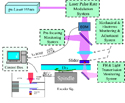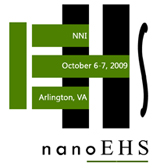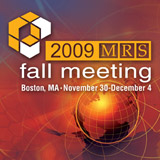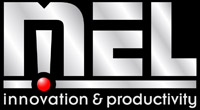|
The NNN Newsletter
Business Opportunities
in Nanotechnology: Impacts of the Economic Slowdown
 The economic slowdown has had its effects on high technology businesses—particularly those engaged in early stage nanotechnologies—impacting issues such as investment funding, workforce, supply chain, equipment, and revenues. Broader implications for the future economic growth and proliferation of emerging nanotechnologies and nanomanufacturing capabilities remain difficult to assess. Forecast scenarios range from slight corrections of previous growth trends to complete interruptions of new technology growth and implementation. While the long-term impact will likely be somewhere in between these extremes, there have been significant changes over the past two years in key enablers for early stage nanotechnologies that will impact the transition from fundamental research to scaled manufacturing of nano-enabled products. But the synopsis is not all negative: it turns out to be a good news, bad news scenario. More... The economic slowdown has had its effects on high technology businesses—particularly those engaged in early stage nanotechnologies—impacting issues such as investment funding, workforce, supply chain, equipment, and revenues. Broader implications for the future economic growth and proliferation of emerging nanotechnologies and nanomanufacturing capabilities remain difficult to assess. Forecast scenarios range from slight corrections of previous growth trends to complete interruptions of new technology growth and implementation. While the long-term impact will likely be somewhere in between these extremes, there have been significant changes over the past two years in key enablers for early stage nanotechnologies that will impact the transition from fundamental research to scaled manufacturing of nano-enabled products. But the synopsis is not all negative: it turns out to be a good news, bad news scenario. More...
Regards,
Jeff Morse, Managing Director,
National Nanomanufacturing Network
Learn More about the 
|
NNN Test Bed Reviews September 2009
NSF Center for Scalable and Integrated NanoManufacturing (SINAM),
University of California Berkeley
 Plasmonic Imaging Lithography Plasmonic Imaging Lithography
In
order to leverage the dramatic advancements in nano-scale
science and engineering, there is an urgent need for versatile,
high-throughput nanofabrication technologies that are adaptable
to frequent design changes. Commonly used mask-less nano-lithography
methods, such as electron-beam, focused ion-beam and scanning-probe
lithography, can provide the desired flexibility, but prove
to be rather limited by their throughput, mainly due to their
slow scanning capabilities. More....
|
Benefits of Three-Dimensional Integrated Nanostructures for Energy Applications
 While it has been known for many years that three-dimensional (3D) nanoscale architectures enhance the performance of energy storage and power generating devices, it has not been until recently that the tools to fabricate such structures are readily available for scalable processes. High surface area materials have previously demonstrated performance benefits for electrodes and catalyst supports in battery and fuel cell technologies, but new fabrication and integrated process capabilities now make it possible to address specific limitations of a given technology by enabling 3D designs. Three examples from the literature demonstrate the merits of 3D integration for power and energy storage devices.
More... While it has been known for many years that three-dimensional (3D) nanoscale architectures enhance the performance of energy storage and power generating devices, it has not been until recently that the tools to fabricate such structures are readily available for scalable processes. High surface area materials have previously demonstrated performance benefits for electrodes and catalyst supports in battery and fuel cell technologies, but new fabrication and integrated process capabilities now make it possible to address specific limitations of a given technology by enabling 3D designs. Three examples from the literature demonstrate the merits of 3D integration for power and energy storage devices.
More...
Algal
Cellulose Key to Polymer Battery
 Researchers
from Uppsala University have created a cellulose-polypyrrole composite
electrode material with the highest reported charge rate and capacity
for nonmetal batteries. This work, reported in Nano Letters, significantly
enhances the performance of polypyrrole (PPy), a conductive polymer,
by layering it thinly over a large surface area substrate. In this
case, the highly porous cellulose fibers of Cladophora algae--with
100 times the surface area of terrestrial cellulose--is coated with
a 50nm layer of PPy. More... Researchers
from Uppsala University have created a cellulose-polypyrrole composite
electrode material with the highest reported charge rate and capacity
for nonmetal batteries. This work, reported in Nano Letters, significantly
enhances the performance of polypyrrole (PPy), a conductive polymer,
by layering it thinly over a large surface area substrate. In this
case, the highly porous cellulose fibers of Cladophora algae--with
100 times the surface area of terrestrial cellulose--is coated with
a 50nm layer of PPy. More...
Multiple
Opportunities for Postdoctoral Associates at ORNL FIRST Center
 The Fluid Interface Reactions, Structures and Transport (FIRST) Energy Frontier Research Center at Oak Ridge National Laboratory has several opportunities for post doctoral research associates. The FIRST Center will develop predictive computational models relating the nanoscale structures, dynamics and reactivities of fluid-solid interfaces in order to make transformational advances in electrical energy storage and catalysis for energy applications. More... The Fluid Interface Reactions, Structures and Transport (FIRST) Energy Frontier Research Center at Oak Ridge National Laboratory has several opportunities for post doctoral research associates. The FIRST Center will develop predictive computational models relating the nanoscale structures, dynamics and reactivities of fluid-solid interfaces in order to make transformational advances in electrical energy storage and catalysis for energy applications. More...
Read more on 

|
Upcoming Events
September 28 - 30, 2009
Nanotech Northern Europe 2009
September 30 - October 2, 2009
SEMICON Taiwan 2009
October 4 - 9, 2009
Advances in Magnetic Nanostructures
October 6 - 7, 2009
Carbon Nanotube Enabled Materials Short Course
October 6 - 7, 2009
NanoEHS
Advertisement

Advertisement

Advertisement

Affiliated Centers






Recently Published
From Our Affiliates
Directed Assembly of High Density Single-walled Carbon Nanotube Patterns on Flexible Polymer Substrates
Nanotechnology 20(29): 295302
Chemical Vapor Detection Using Parent Polythiophene Nanofibers
Macromolecules 42(15): 5414-5415
Self-assembly of Methanethiol on the Reconstructed Au(111) Surface
Physical Review B 80(8): 081401
A Chloride Ion-selective Boron Nitride Nanotube
Chemical Physics Letters 478(4-6): 185-190
DNAzyme Catalytic Becon Sensors That Resist Temperature-dependent Variations
Chemical Communications 27: 4103-4105
|
 Volume
2 Issue 8 - September 2009
Volume
2 Issue 8 - September 2009 The economic slowdown has had its effects on high technology businesses—particularly those engaged in early stage nanotechnologies—impacting issues such as investment funding, workforce, supply chain, equipment, and revenues. Broader implications for the future economic growth and proliferation of emerging nanotechnologies and nanomanufacturing capabilities remain difficult to assess. Forecast scenarios range from slight corrections of previous growth trends to complete interruptions of new technology growth and implementation. While the long-term impact will likely be somewhere in between these extremes, there have been significant changes over the past two years in key enablers for early stage nanotechnologies that will impact the transition from fundamental research to scaled manufacturing of nano-enabled products. But the synopsis is not all negative: it turns out to be a good news, bad news scenario.
The economic slowdown has had its effects on high technology businesses—particularly those engaged in early stage nanotechnologies—impacting issues such as investment funding, workforce, supply chain, equipment, and revenues. Broader implications for the future economic growth and proliferation of emerging nanotechnologies and nanomanufacturing capabilities remain difficult to assess. Forecast scenarios range from slight corrections of previous growth trends to complete interruptions of new technology growth and implementation. While the long-term impact will likely be somewhere in between these extremes, there have been significant changes over the past two years in key enablers for early stage nanotechnologies that will impact the transition from fundamental research to scaled manufacturing of nano-enabled products. But the synopsis is not all negative: it turns out to be a good news, bad news scenario.  Plasmonic Imaging Lithography
Plasmonic Imaging Lithography While it has been known for many years that three-dimensional (3D) nanoscale architectures enhance the performance of energy storage and power generating devices, it has not been until recently that the tools to fabricate such structures are readily available for scalable processes. High surface area materials have previously demonstrated performance benefits for electrodes and catalyst supports in battery and fuel cell technologies, but new fabrication and integrated process capabilities now make it possible to address specific limitations of a given technology by enabling 3D designs. Three examples from the literature demonstrate the merits of 3D integration for power and energy storage devices.
While it has been known for many years that three-dimensional (3D) nanoscale architectures enhance the performance of energy storage and power generating devices, it has not been until recently that the tools to fabricate such structures are readily available for scalable processes. High surface area materials have previously demonstrated performance benefits for electrodes and catalyst supports in battery and fuel cell technologies, but new fabrication and integrated process capabilities now make it possible to address specific limitations of a given technology by enabling 3D designs. Three examples from the literature demonstrate the merits of 3D integration for power and energy storage devices.
 Researchers
from Uppsala University have created a cellulose-polypyrrole composite
electrode material with the highest reported charge rate and capacity
for nonmetal batteries. This work, reported in Nano Letters, significantly
enhances the performance of polypyrrole (PPy), a conductive polymer,
by layering it thinly over a large surface area substrate. In this
case, the highly porous cellulose fibers of Cladophora algae--with
100 times the surface area of terrestrial cellulose--is coated with
a 50nm layer of PPy.
Researchers
from Uppsala University have created a cellulose-polypyrrole composite
electrode material with the highest reported charge rate and capacity
for nonmetal batteries. This work, reported in Nano Letters, significantly
enhances the performance of polypyrrole (PPy), a conductive polymer,
by layering it thinly over a large surface area substrate. In this
case, the highly porous cellulose fibers of Cladophora algae--with
100 times the surface area of terrestrial cellulose--is coated with
a 50nm layer of PPy.  The Fluid Interface Reactions, Structures and Transport (FIRST) Energy Frontier Research Center at Oak Ridge National Laboratory has several opportunities for post doctoral research associates. The FIRST Center will develop predictive computational models relating the nanoscale structures, dynamics and reactivities of fluid-solid interfaces in order to make transformational advances in electrical energy storage and catalysis for energy applications.
The Fluid Interface Reactions, Structures and Transport (FIRST) Energy Frontier Research Center at Oak Ridge National Laboratory has several opportunities for post doctoral research associates. The FIRST Center will develop predictive computational models relating the nanoscale structures, dynamics and reactivities of fluid-solid interfaces in order to make transformational advances in electrical energy storage and catalysis for energy applications. 







